Pipe for feeding slurry
Ceramic lined pipe for feeding slurry to agitation tank
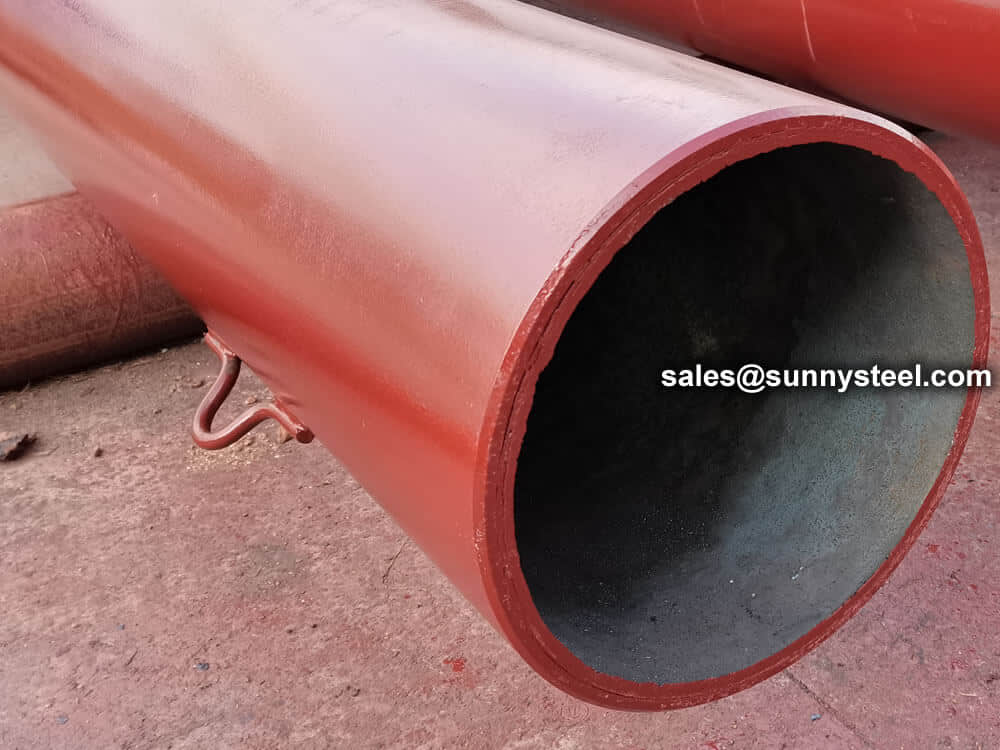
Explore the advanced sintered ceramic composite pipes designed for exceptional wear and corrosion resistance.
Download PDFSintered ceramic composite pipe is manufactured by the high-tech production process-from Self-propagating. Sintered ceramic composite pipe and elbow create a new generation of abrasion and corrosion resistant engineering pipeline.
The composite pipe is composed of three layers: ceramic, intermediate, and steel layers. The ceramic layer is formed by molten alumina at a temperature above 2500 degree. The molten alumina produced from the reaction Fe2O3+2Al=2Fe+Al2O3 spreads on the inside wall of the steel pipe under the influence of a centrifugal force, then solidifies, so the ceramic layer has high density and smooth surface and bonds to the steel pipe.
The Sintered ceramic composite pipe is composed of three layers: ceramic, intermediate, and steel layers. The ceramic layer is formed by molten alumina at a temperature above 2500 degree. The molten alumina produced from the reaction fe2o3+2al=2fe+al2o3 spreads on the inside wall of the steel pipe under the influence of a centrifugal force, then solidifies, so the ceramic layer has high density and smooth surface and bonds to the steel pipe.
Because the composite pipe is with the characteristics of high steel strength, good toughness, impact resistance, good weldability and corundum high hardness, high wear resistance, corrosion resistance, heat resistance, low steel overcome hardness, poor wear resistance and toughness of ceramic poor characteristics.
The composite pipe has good wear resistance, heat resistance, corrosion resistance and resistance to mechanical shock and thermal shock, weldability and good overall performance. Wear and corrosion pipeline ideal particulate materials, grinding, and other corrosive media. As the tube with wear, corrosion resistance, heat resistance, it can be widely used in electric power, metallurgy, mining, coal, chemical and other industries as transport sand, stone, coal, ash, molten aluminum and other materials grinding particles and corrosive media, is an ideal abrasion resistant pipes.
Metallurgy, electric power industry, transport coal, ash, mud, lime gypsum slurry, etc. annually consumes a lot of metal pipes. Ceramic composite pipes can replace other channels with high wear resistance, long life, easy installation, with significant economic benefits of features, and the operating life of a pipe or even several times more than ten times. In addition, Ceramic composite tube is light weight, appropriate price, and good abrasion resistance, corrosion resistance, because the service life is long, the hanger costs, handling, installation, and operation cost is reduced because of long service life.
Sintered Ceramic Composite Pipe is a type of industrial piping that leverages the exceptional properties of ceramics to enhance the performance of traditional metallic pipes. This innovative piping solution combines the strength and ductility of metals with the exceptional wear, corrosion, and heat resistance of ceramics, resulting in a pipe that is highly resistant to abrasion and chemical attack.
| Item | Index |
|---|---|
| Content of Alumina | ≥95% |
| Density | ≥3.5 g/cm3 |
| Rockwell Hardness | ≥80 HRA |
| Impact Strength | ≥850 Mpa |
| Bending Strength | ≥290MPa |
| Breaking Temper | ≥4.8MPa·m1/2 |
| Coefficient of Linear Thermal Expansion | 20W/m.K |
| Sand injection test | 30% Transfer test of sludge with SiO2 | ||
|---|---|---|---|
| Material | Volume diminution (cm3) |
Material | Volume diminution (cm3) |
| Ceramic lined Steel pipe | 0.0022 | Ceramic lined Steel pipe | 3 |
| Ceramic pipe Al2O397% | 0.0025 | S45C | 25 |
| Items | Index |
|---|---|
| Alumina content | 92% |
| Bulk Density | 3.62g/cm³ |
| Rockwell Hardness (HRA) | 90 |
| Compressive Strength | 850MPa |
| Fracture Toughness | 4.8MPa.M1/2 |
| Bending Strength | 290MPa |
| Thermal Conductivity 20℃ | 20W/m.k |
| Coefficient of Thermal Expansion | 7.2×10-6m/×m.k |
| Young's Modulus 20℃ | 277GPa |
| Shear Modulus 20℃ | 113GPa |
| Surface Finish: As Fired | 1.27mm |
Wear-resisting bend (wear resistant ceramic pipe)just as its name implies is a relatively traditional is more wear-resisting bend (wear resistant ceramic pipe), adopted the new wear-resistant plastic production, used in large industrial, currently occupies the market share of around 80%.
Ceramic lined is an application that provides protection for materials in environments that experience exposure to extreme chemicals and temperatures.
Ceramic lined refers to a material or surface that has a layer of ceramic applied to it. This ceramic layer provides protection against wear, corrosion, and abrasion, making it ideal for use in industrial applications where harsh conditions can cause damage to equipment over time. Ceramic lining is commonly used in pipes, tanks, and other equipment used in chemical processing, mining, and power generation industries.
Self-propagating high temperature synthesis technology of corundum ceramic composite steel pipe is that is, "SHS" technology composite, is a national High-tech "863" project, is the original national metallurgical Industry Department, the Ministry of Electricity Project focused on the promotion of new products, the tube from within to outside by ceramic (corundum) layer, transition layer and steel layer composed of three parts.
Ceramic composite pipe due to corundum ceramic (a-AL2O3), Mohs hardness of 9.0 is equivalent to more than HRC90. Therefore, it has high wear resistance for abrasive media conveyed by industries such as metallurgy, electric power, mining, and coal. It has been confirmed by industrial operation that its wear life is ten times or even several ten times that of hardened steel.
SHS ceramic composite pipe is not like a convex spiral line on the inner surface of a seamless steel pipe because the inner surface is smooth and never corrodes. The inner surface roughness and clear water resistance characteristics of the relevant test units were tested. The smoothness of the inner surface was better than that of any metal pipe. The clear drag coefficient was 0.0193, which was slightly lower than the seamless pipe. Therefore, the tube has the characteristics of small running resistance and can reduce operating costs.
Since the steel ceramic layer is (a-AL2O3), it is a neutral characteristic. Therefore, it is resistant to acid and alkali and seawater corrosion, and it also has anti-scaling properties.
Due to the corundum ceramic (a-AL2O3), it is a single stable crystalline structure. Therefore, the composite pipe can operate normally in the long-term temperature range of -50--700°C. Material linear expansion coefficient of 6-8 × 10-6/0C, about 1/2 of the steel pipe. The material has good thermal stability.
Ceramic composite pipes are light weight and affordable. It is 50% lighter than the cast stone tube with the same inner diameter; it is 20-30% lighter than the wear-resistant alloy tube, and it has good wear resistance and corrosion resistance because of its long service life, thus supporting hanger costs, transportation costs, installation fees, and Reduce operating costs. Comparing the project budget of the design institute and construction unit with the actual project, the project cost is equivalent to the cast stone. Compared with the wear-resistant alloy pipe, the project cost is reduced by about 20%.
Because of its light weight and good welding performance. Therefore, welding, flanges, quick coupling, etc. can be adopted, and the construction and installation are convenient, and the installation cost can be reduced.
Ceramic steel pipe and traditional steel pipe, wear-resistant alloy cast steel pipe, cast stone pipe, as well as steel plastic, steel rubber pipe, etc. have essential differences. The outer layer of ceramic steel pipe is steel, and the inner is corundum. The Vickers hardness of corundum layer is as high as 100-1500 (Rockwell hardness is 90-98), which is equivalent to tungsten cobalt hard gold. The wear resistance is more than 20 times times higher than carbon steel pipe, it is superior to the corundum grinding wheel which is usually bonded. Now the corundum grinding wheel is still the main grinding wheel of the grinding mill. The corundum layer in the ceramic steel tube can wear away the corundum grinding wheel. The abrasion resistance of ceramic steel tube is mainly by the inner layer of several millimeters thick corundum layer, its Morse hardness is 9, second only to diamond and SIC, in all oxides, its hardness is the highest.
The inner liner ceramic wear-resisting steel pipe is made by SHS high temperature synthesis-centrifugal method, the melting point of corundum in ceramic steel pipe is 2045 ℃, the corundum layer and steel layer have special structure and stress field because of the process reason. Under normal temperature, the compressive stress of the ceramic layer, the tensile stress of the steel layer, the two opposites, into a balanced whole. Only when the temperature rises to more than 400 ℃, because the thermal expansion coefficient is different, the new stress field produced by the thermal expansion and the original stress field in the ceramic steel pipe cancel each other, so that both the ceramic layer and the steel layer are in a free equilibrium state. When the temperature rises to 900 ℃ the inner liner ceramic wear-resistant steel pipe into the water, repeatedly soaked repeatedly, the composite layer does not crack or cracking, showing the incomparable thermal shock resistance of ordinary ceramics. This performance is of great use in construction, because the outer layer is steel, in addition to heating the inner layer does not crack, in the construction, the flange, blowing, explosion-proof doors can be welded, but also can be directly welded to connect, which is more than wear-resistant cast stone pipe, wear-resistant cast steel pipe, Rare-earth wear-resistant steel pipe, bimetal composite pipe, steel pipe, Steel rubber pipe In the construction is not easy to weld or welding more than a chip. Internal liner ceramic Wear-resistant steel pipe resistance to mechanical impact is good, in transport, installation beat and the two support between the weight bending deformation, the composite layer does not break off.
At present, the practice of dozens of thermal power plants shows that the wear resistance of the inner-lined ceramic steel tube is high, and the resistance to fluid scouring is strong. In the first air duct, the bending pipe wear the most quickly, the wear resistance of the inner liner ceramic wear-resisting steel pipe is more than 5 times times higher than that of the thick wall wear-resisting cast steel elbow.
In practice, the inner liner ceramic wear-resistant steel pipe after 1-2 years to open observation and measurement, the composite layer has no obvious wear or fall off, in the same size and unit length of the pipeline, the internal liner ceramic wear-resistant steel tube weight only wear-resistant cast steel pipe or bimetal composite pipe of about 1/2, the cost of each of the meters reduced 30–40%, Only cast stone pipe and Rare-earth wear-resistant steel pipe weight of about 2/5, per meter project cost reduction of more than 20%. In the corrosive or high-temperature place to use the liner ceramic wear-resistant steel pipe, its price is only a stainless steel tube, nickel-titanium tube of a fraction of.
Fluid pipeline transportation is not only used in the power industry, but also in metallurgy, coal, petroleum, chemical, building materials, machinery and other industries. When the pipe is transported with large grinding material (such as ash residue, pulverized coal, mineral fine powder, tailings cement, etc., there is a problem of fast abrasion of pipe, especially the bending pipe wear fast; when conveying a strong corrosive gas, liquid or solid in the pipeline, there is a problem that the pipeline is corroded and destroyed quickly. When conveying the material with high temperature in the pipeline, there are some problems such as the price of heat-resisting steel pipe is very expensive. The internal liner ceramic wear-resistant steel pipe market, these problems are solved.
A ceramic lined pipe is a type of pipeline that has an inner lining made of ceramic material to provide superior resistance to wear, abrasion, and corrosion. The ceramic lining is typically made of high-grade alumina ceramics, which are known for their hardness, strength, and durability.
Ceramic lined pipes are commonly used in industrial applications where the pipeline is exposed to harsh conditions, such as in mining, power generation, oil and gas, and chemical processing. The ceramic lining provides exceptional wear resistance, protecting the underlying steel or cast iron pipe from premature failure due to abrasion or corrosion.
In addition to their excellent wear properties, ceramic lined pipes may also provide benefits such as improved flow rates, reduced downtime, and lower maintenance costs. They may also be used in applications where hygiene is important, as the ceramic lining is non-toxic and does not react with most chemicals.
Ceramic lined pipes may be manufactured in various sizes and shapes, including elbows, tees, and reducers, to meet the specific requirements of each application. The ceramic lining may be adhered to the inner surface of the pipe using specialized adhesives, and may be installed using conventional welding or mechanical joining techniques.
While ceramic lined pipes can offer significant benefits in terms of wear resistance and longevity, they are typically more expensive than traditional steel pipes due to the cost of the ceramic lining and specialized manufacturing processes.

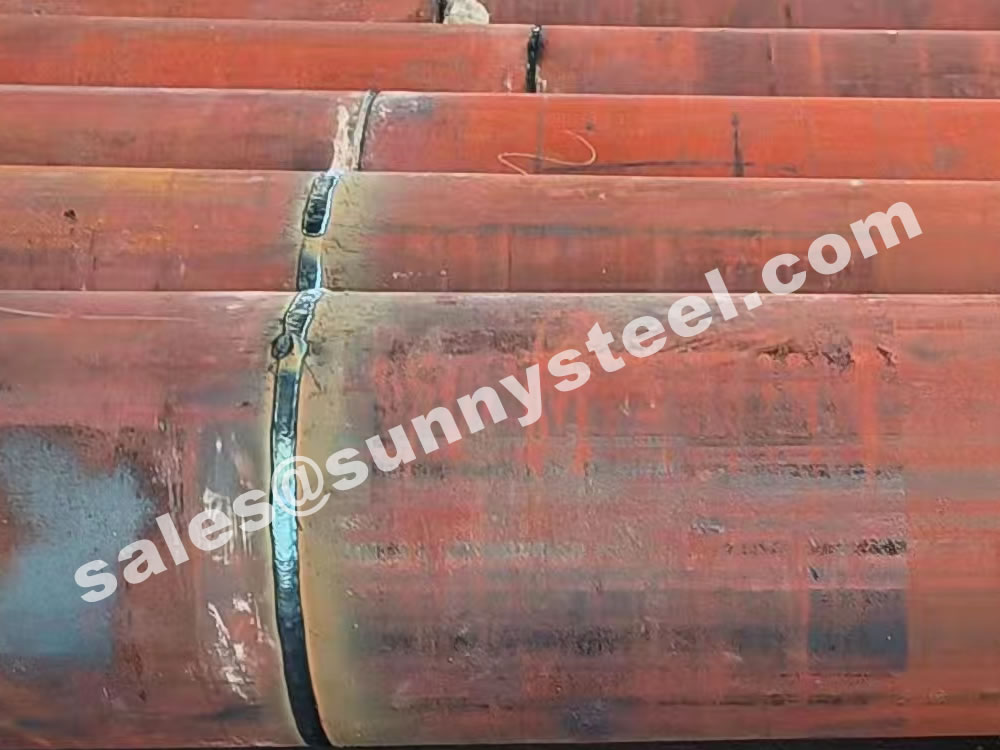
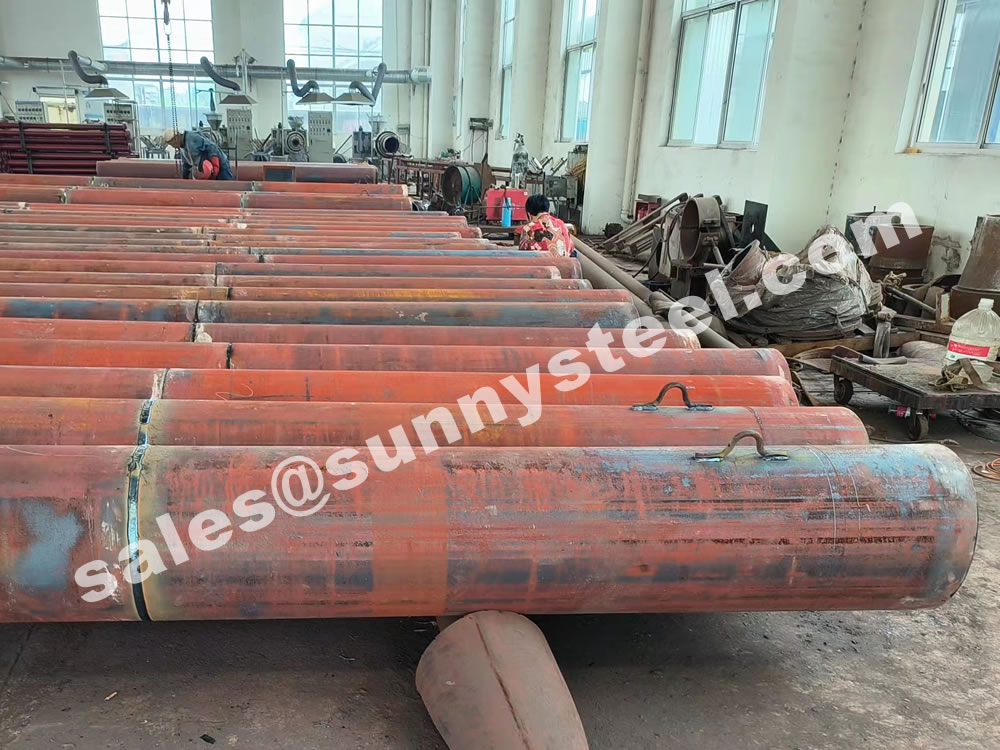
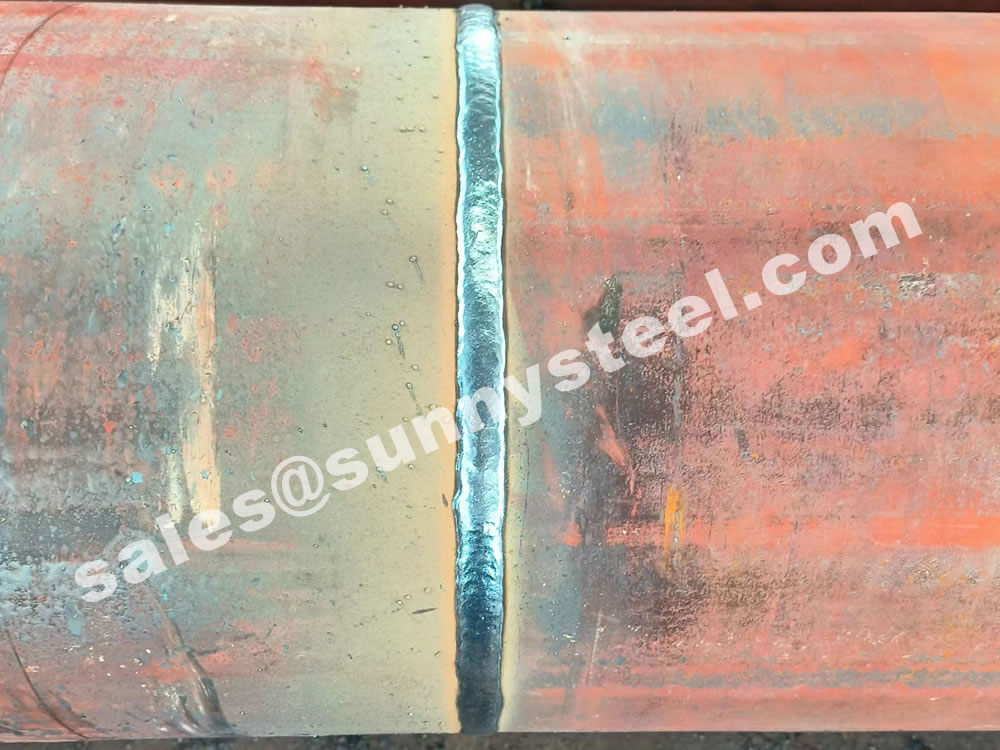
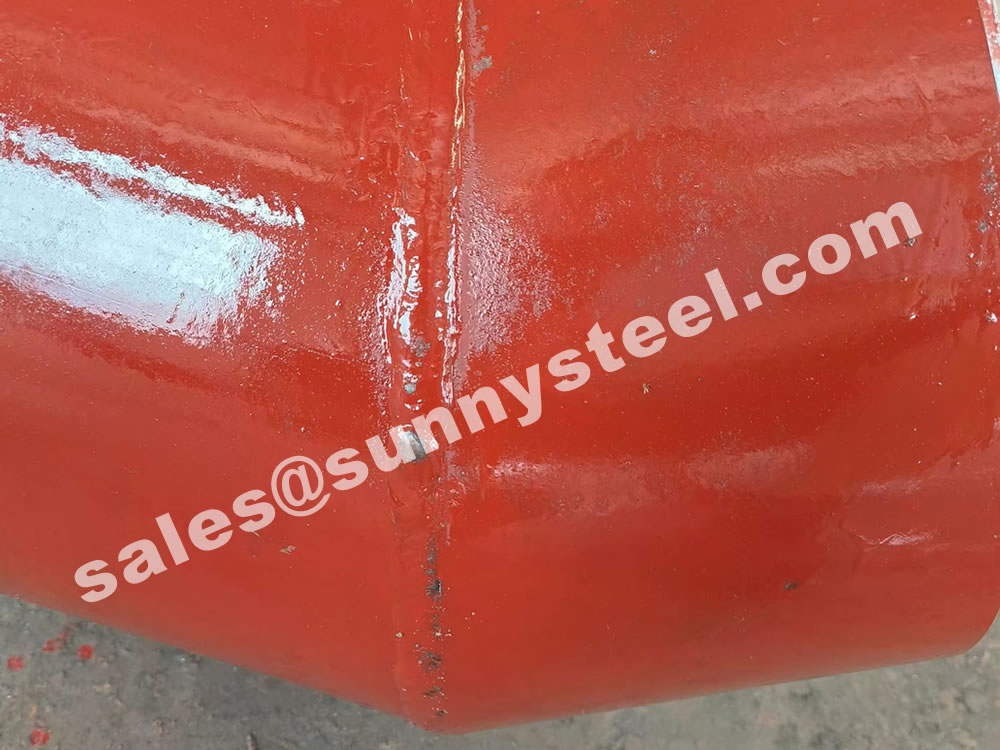

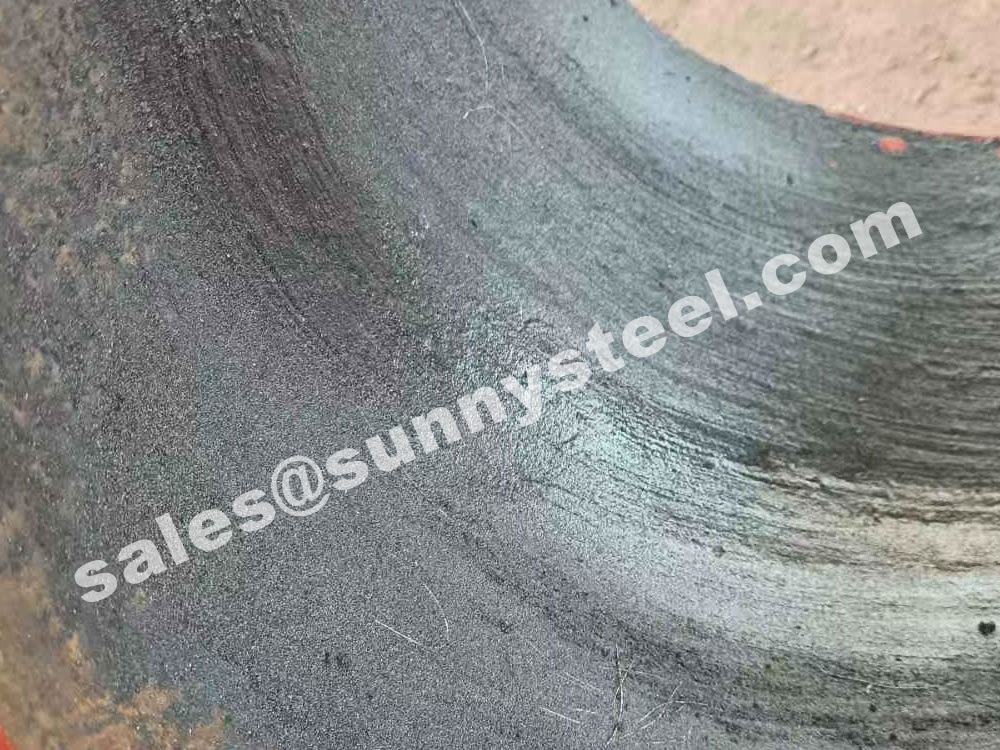

Ceramic liner pipe is a high technology production technology-self-fuel high temperature clutch synthesis method.
Ceramic Liner Composite pipe is a high technology production technology-self-fuel high temperature clutch synthesis method. The tube is composed of corundum ceramics, transition layer and steel three layers respectively from inside to outside, the ceramic layer is formed dense corundum porcelain (Al2O3) at high temperature above 2,200 ℃, and the steel pipe is formed firmly by the transition layer.
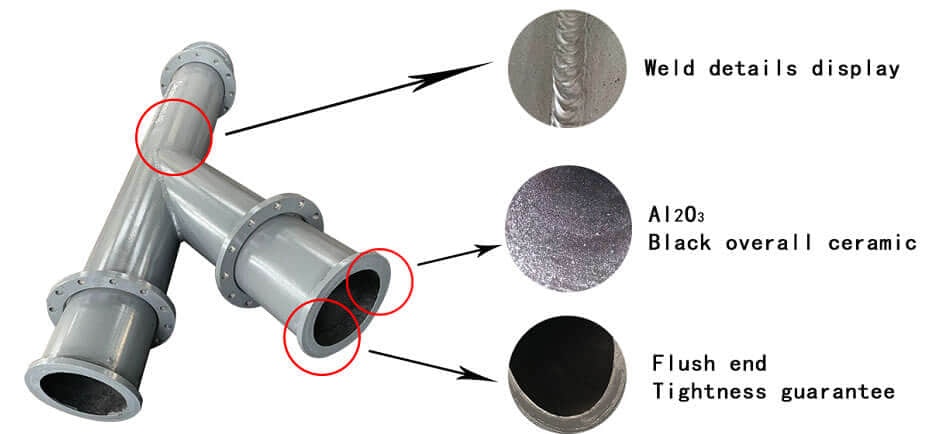
1. Good abrasion resistance
Ceramic lined pipe due to the inner lining of corundum ceramic (A-al2o3), the Mo hardness of up to 9.0 of the equivalent HRC90. Therefore, the metallurgical, electric power, mining, coal and other industries to transport the grinding medium has high wear resistance. The industrial operation confirms that its wear-resisting life is 10 times times or even dozens of times times that of quenched steel.
2. Small Operation resistance
corundum ceramic wear-resistant tube in the inner surface of smooth, and never rust, nor like seamless steel tube inside the surface has convex spiral. After testing the internal surface roughness and water resistance characteristics of the testing units, the smoothness of the inner surface is superior to any metal pipe, the resistance coefficient is 0.0193, slightly lower than the seamless pipe.
3, corrosion resistance, anti-scaling
Because the steel ceramic layer is (A-al2o3), it is a neutral trait. Therefore, with acid and alkali resistance and seawater corrosion, and at the same time with anti-scaling and other characteristics.
4. High temperature resistance and heat-resisting performance
The corundum ceramic (A-al2o3) is a single stable crystalline structure. Therefore, the composite pipe can operate in the -50--700℃ temperature range for a long time. Material linear expansion coefficient 6-8x10-6/0c, about 1/2 of steel pipe.
5. Low construction cost
corundum ceramic wear-resistant tube light weight, the price is suitable. The casting pipe with the same inner diameter is lighter than 50% and lighter than that of the wear-resistant alloy tube 20–30%.
6. Convenient installation and construction
Because of the light weight of the tube, and good welding performance. Therefore, welding, flange, rapid connection and so on, construction and installation is convenient.
7. Ceramic lined pipe with the traditional steel pipe, wear-resistant alloy cast steel pipe, cast stone pipe as well as steel plastic, steel rubber pipe, etc. have essential differences. The outer layer of ceramic steel pipe is steel, and the inner is corundum. The Vickers hardness of corundum layer is as high as 100-1500 (Rockwell hardness is 90-98), which is equivalent to tungsten cobalt hard gold. The wear resistance is more than 20 times times higher than carbon steel pipe, it is superior to the corundum grinding wheel which is usually bonded.
Now the corundum grinding wheel is still the main grinding wheel of the grinding mill. The corundum layer in the ceramic steel tube can wear away the corundum grinding wheel. The abrasion resistance of ceramic steel tube is mainly by the inner layer of several millimeters thick corundum layer, its Morse hardness is 9, second only to diamond and SIC, in all oxides, its hardness is the highest.
